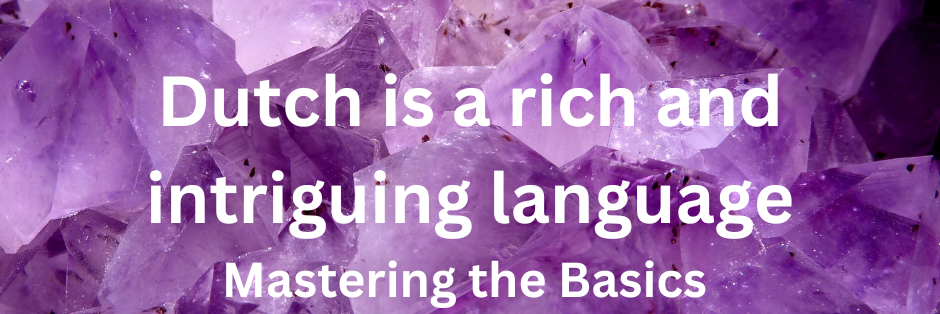Published: November 27, 2023
Dutch, a rich and intriguing language, is a close relative of English and German, making it a fascinating study for language enthusiasts. This guide provides a comprehensive introduction to Dutch grammar, helping you build a strong foundation in understanding its structure and usage.
Step 1: The Dutch Alphabet and Pronunciation
- The Alphabet: The Dutch alphabet consists of the same 26 letters as English, but with distinct pronunciations. Mastering these sounds is crucial for accurate speaking and understanding.
- Key Sounds: Dutch has several unique sounds, notably the ‘ui’, ‘eu’, and the ‘ij/ei’ diphthongs, as well as the guttural ‘g’. These sounds do not have direct equivalents in English and require practice.
- Pronunciation Resources: Utilize audio materials and speaking exercises to familiarize yourself with these unique Dutch phonetics.
Step 2: Nouns and Gender
- Three Genders: Dutch has three grammatical genders – masculine, feminine, and neuter. While masculine and feminine genders tend to merge in the common language, understanding the distinctions is important for proper grammar.
- Articles: The definite articles are ‘de’ (for masculine and feminine nouns) and ‘het’ (for neuter nouns). Indefinite articles are less complicated, with ‘een’ used universally.
- Plural Formation: Plurals are generally formed by adding ‘-en’ or ‘-s’, with specific rules governing the choice.
Step 3: Pronouns in Depth
- Personal Pronouns: Understanding the use of personal pronouns like ‘Ik’ (I), ‘jij/je’ (you), and ‘hij/ze’ (he/she) is vital. Note the informal ‘jij/je’ and formal ‘u’ distinction for the English ‘you’.
- Possessive and Reflexive Pronouns: These change with gender, number, and formality. For example, ‘mijn’ (my), ‘jouw’ (your), and reflexive ‘zich’ for third-person singular and plural.
Step 4: The Verb System Explored
- Regular Verbs: Follow a pattern in conjugation across present, past, and perfect tenses. Learning these patterns can simplify verb usage.
- Irregular Verbs: These are the exceptions to standard conjugation rules and are crucial for fluent Dutch. Key examples include ‘zijn’ (to be) and ‘hebben’ (to have).
- Verb Placement: In Dutch, the verb typically takes the second position in a main clause. In subordinate clauses, the verb comes at the end, which can be challenging for learners.
Step 5: Mastering Sentence Structure
- Standard Order: The typical Dutch sentence structure is Subject-Verb-Object, but variations occur in questions and subordinate clauses.
- Question Formation: Involves inverting the subject and verb, a common feature in Germanic languages.
- Subordinate Clauses: These have a unique structure, often ending with the verb. Understanding this structure is key to advanced Dutch proficiency.
Step 6: Adjectives and Adverbs – Adding Detail
- Adjective Agreement: Dutch adjectives must agree with the noun in terms of gender and number and usually come before the noun.
- Adverb Usage: Adverbs in Dutch can modify verbs, adjectives, or other adverbs. Their placement is somewhat flexible but still follows certain rules for clarity and meaning.
Step 7: Utilizing Prepositions and Conjunctions
- Prepositions: Essential for expressing spatial and temporal relationships. Examples include ‘op’ (on), ‘in’ (in), and ‘bij’ (near).
- Conjunctions: They link clauses and sentences. Coordinating conjunctions like ‘en’ (and) and subordinating conjunctions like ‘omdat’ (because) are crucial in constructing complex sentences.
Step 8: The Art of Negation
- Forming Negatives: ‘Niet’ (not) and ‘geen’ (no/none) are used to negate sentences in Dutch. Their placement within the sentence can change the emphasis and meaning.
Step 9: Idioms and Expressions
- Cultural Insights: Dutch is rich in idiomatic expressions, which offer a window into Dutch culture and thought. Learning these phrases not only improves language fluency but also cultural understanding.
Embarking on the journey of learning Dutch grammar opens up a new world of linguistic and cultural experiences. This guide provides the groundwork, but the mastery comes with practice, immersion, and a willingness to explore the intricacies of the Dutch language. Embrace the process and enjoy the unique adventure that learning Dutch offers!

